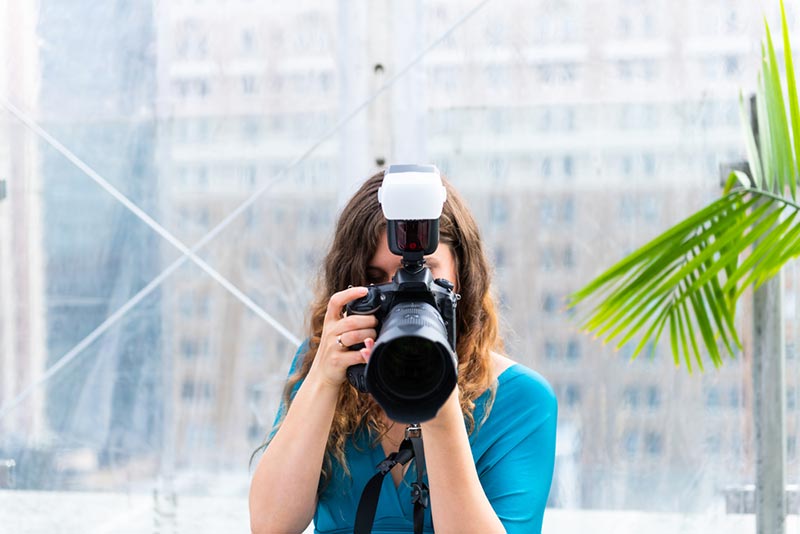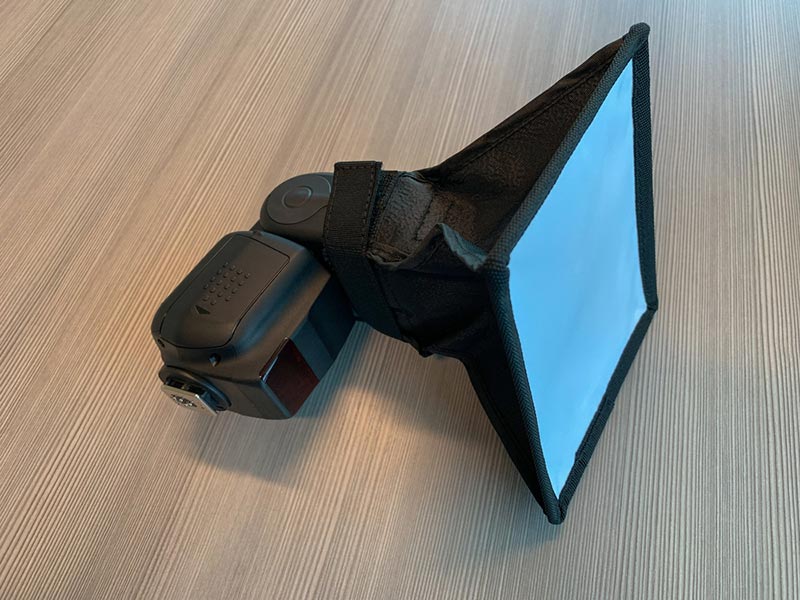What Is a Diffuser? Photography Basics Explained
Last Updated on

Have you ever taken a photo with flash, only to realize that it lit up all the wrong areas? It doesn’t seem to matter how much you tweak it; the flash is simply too harsh to get the photo that you want.
But if you turn the flash off, it’s too dim and you’re still not getting what you want. It’s a frustrating experience, and if you’re unaware of what a diffuser is and how to use it, it can seem impossible to fix.
It’s why learning what a diffuser is and how to use it is so important. It turns those hard-to-take photos into perfect shots with light exactly where you want it. But what exactly is a diffuser, how do you use it, and how does it work? We break it all down for you here. In short, diffusers spread, or diffuse, the light of the flash to avoid harsh shadows in your photographs.

How Does It Work?
A flash diffuser works by taking the concentrated light of the flash and spreading it out. This means instead of one area getting all the light and potentially creating harsh shadows or no light anywhere else, everywhere gets even amounts of light.
You install a flash diffuser over your current flash, and all the light that the flash produces must go through it. The material spreads out the light so it reaches a wider area.
It’s important to note that while a flash diffuser might filter out some of the light, that’s not the goal. A top-notch flash diffuser will still send nearly all the light through; it’s just trying to spread it out more evenly over the entire subject.
While most diffusers have the classic rectangle shape, they come in all sorts of sizes to match whatever type of flash you’re using. So, you don’t need one type of flash just to use a diffuser.

What Are the Different Types of Diffusers?
When you’re looking at flash diffusers, there are three main types to consider: the diffusion dome, the reflector, and the softbox. They all do the same thing but in slightly different ways.
Diffusion domes are the most commonly thought of when you’re talking about flash diffusers. It snaps on over the flash and then diffuses and scatters the light out over the entire subject.
A softbox is extremely similar to a diffusion dome but is typically much larger. It spreads out light a bit more effectively than a diffusion dome, but it’s also much bulkier.
Finally, a reflector isn’t what comes to mind when you think of a flash diffuser, but it certainly counts as one. It’s simply a type of hood that goes on top of the flash to help reflect the light over a larger surface area.
Reflectors don’t diffuse light as effectively as a dome diffuser or a softbox, but they also don’t lose as much light either. This makes it a great choice if you need more flash but can’t have the full harshness of a traditional flash. You can also typically bend a reflector to direct light where you need it more.
Where Is It Used?
You can use a diffuser anytime you need extra light from a flash but don’t want the harsh, concentrated light that a full flash creates. A diffuser is excellent for creating subtle light over a wider area.
Therefore, you can use a diffuser in just about any situation where you don’t have enough natural light for your photographs. It’s also more common for professional photographers to use a diffuser than amateurs.
If you’re finding that your flash is creating too much harsh light and don’t know how to remedy it, you’ll likely want to use a flash diffuser.

Advantages of a Diffuser
The advantage of a diffuser is that it spreads out light over a greater area. This creates more of a natural light appearance.
This is great for portrait or product photography, as well as many other interior photography applications. Anytime that you want your flash to light up everything equally, a flash diffuser is an outstanding choice.
Disadvantages of a Diffuser
One of the biggest disadvantages of a flash diffuser is that it limits the amount of light coming out from the flash. While high-end flash diffusers let more light through, they all end up blocking at least some of the light from reaching the subject.
This is an issue if you want harsh light on the subject, such as if you’re looking for a more dynamic photograph.

Frequently Asked Questions (FAQs)
It’s perfectly normal to have questions about flash diffusers, which is why we did our best to address a few of the most common questions about these great camera accessories for you here.
How Much Does a Flash Diffuser Cost?
Compared to most other camera accessories, a flash diffuser is relatively low cost. Most are under $25, although if you’re looking for a professional-quality flash diffuser, they can cost a couple hundred dollars.
How Do You Install a Flash Diffuser?
Flash diffusers are typically easy to install. Most of them clip onto the existing flash system, making it a few-second installation. However, always look at how the flash diffuser connects before purchasing it, so you know if it’ll work with your camera and flash.
How Long Does a Flash Diffuser Last?
While a flash diffuser is a relatively low-cost accessory, it doesn’t last as long as many other accessories. The most common problem with flash diffusers is that they yellow over time. You should be able to get at least 5 years out of a quality flash diffuser, though; just keep an eye on it to see when it starts to yellow.

A Quick Reference Guide
- When you want subtle light
- Portrait photography
- Product photography
- Interior room photography
- Dynamic photographs
- When you want extra focus on the subject
- Outdoor photography

Final Thoughts
While you don’t want to use a flash diffuser for every type of photograph out there, sometimes it’s exactly what you need to get the picture that you want. Since you don’t have to spend that much money to get it, it’s a great accessory to add to your toolbox without breaking the bank.
Go ahead and pick up a flash diffuser, so the next time that you’re struggling with your flash, you can pop it on and get the perfect photograph!
Featured Image Credit: Andriy Blokhin, Shutterstock
About the Author Robert Sparks
Robert’s obsession with all things optical started early in life, when his optician father would bring home prototypes for Robert to play with. Nowadays, Robert is dedicated to helping others find the right optics for their needs. His hobbies include astronomy, astrophysics, and model building. Originally from Newark, NJ, he resides in Santa Fe, New Mexico, where the nighttime skies are filled with glittering stars.
Related Articles:
What Is the Best Binocular Magnification for Hunting? Optical Features Explained
How to Clean a Refractor Telescope: Step-by-Step Guide
How to Clean a Telescope Eyepiece: Step-by-Step Guide
How to Clean a Rifle Scope: 8 Expert Tips
Monocular vs Telescope: Differences Explained (With Pictures)
What Is a Monocular Used For? 8 Common Functions
How to Clean a Telescope Mirror: 8 Expert Tips
Brightfield vs Phase Contrast Microscopy: The Differences Explained
